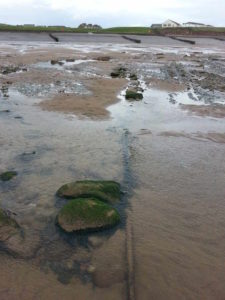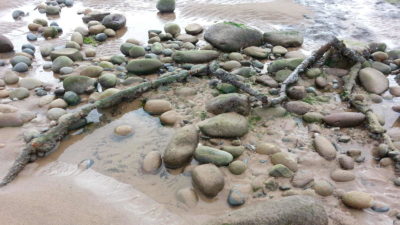St Bees - Isle of Man Submarine Cable
St Bees Head is the nearest part of the English mainland to the Isle of Man, so it was logical that when a telegraph cable was laid from the island, it should come ashore at St. Bees.
In 1858 the Isle of Man Electric Telegraph Company was formed with the express object of laying an undersea cable to the mainland, and connecting it via a direct telegraph network to the island’s main towns. After looking at various options the route from Point of Ayre (IoM) to St Bees Head was adopted. At the St Bees end the Electric and International Telegraph Company agreed to connect the cable with direct lines to Whitehaven and Lancaster.
On the morning of Friday 26th August 1859 the tug Resolute of Liverpool, loaded with cable made by Elliott and Glass of Greenwich, started laying the cable from Point of Ayre. The Resolute was accompanied for the latter part of the journey by the IoM ferry Ben-my Chree with sight-seers on board. The distance was theoretically 28 Nautical miles, but the effect of wind and tide led to a serpentine course which added 7 nautical miles to the cable’s route.
The single-core cable was landed at 7.00 p.m. assisted by volunteers, and connected to the mainland telegraph system at the hut at the Seacote beach. A successful connection was obtained that evening to Whitehaven. The first message was sent to George Dumbell, the secretary of the of Man Electric Telegraph Company. By the 29th August public telegrams were being transmitted, and in the first year 3,585 messages were transmitted between Douglas and England.
However, there were several setbacks due to damage both from shipping and strong currents to the cable, which caused huge disruption to communications with England. The cable was subsequently diverted to Port Cranstal, south of Point of Ayre. But it still suffered damage and the cable was completely lifted, examined and re-laid between St Bees and Port e Vullen. This in turn was replaced by a heavier cable in 1875 laid to Port Cornaa. In 1885 a much heavier cable with three wires was substituted from St Bees to Port Cornaa, which proved a final, reliable connection.
The cable is now unused, and both dedicated telephone cables and fibre optic links have been installed to other points on the UK mainland over the years.
( With thanks to Dermot O’Toole, author of “from Telegraph to Telephone – The Isle of Man Talks to the World”. ISBN 978-1-911177-77-7 . )
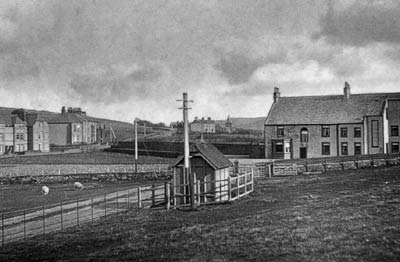
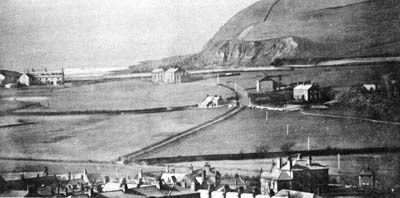
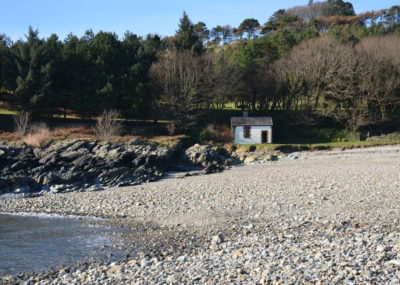
1905 photo of Railway station.
The large pole on the right is carrying domestic telegraph wires from the railway station, to the telegraph office at 22 Main Street.
The local wires and those from the IOM were connected at the signal box into the main English telegraph network, which would be carried on the trackside poles, one of which can be seen on the left of the signal box
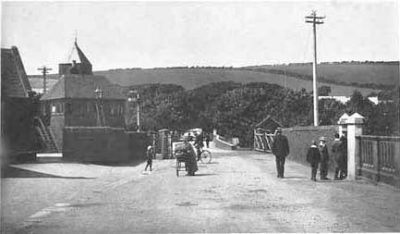
The telegraph office was at 22 Main Street, and had a large pole sticking out of the roof, which can be seen here.
It later also became the telephone exchange. The “Bell” advertising sign can be seen by the doorway.
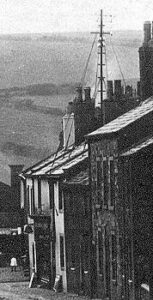
Images of the cable on St Bees beach
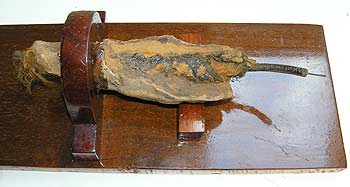
This is a section of undersea telegraph cable laid from St Bees to Port Cornaa near Ramsey in the Isle of Man – 36 nautical miles in length. This fragment has been recovered from the beach.
It has a copper core insulated with Gutta Percha rubber, and served with jute packing and shrouded in an iron wire armoured sheath.
The core is 3/64 of an inch in diameter, and would have had a line resistance of about 630 ohms.
The signal would have been binary on/off electrical impulses using Morse code. Three such cables were laid in 1859, 1875 and 1885 on this route, and they were for some time the only direct means of high speed communication between the Island and the UK mainland.
